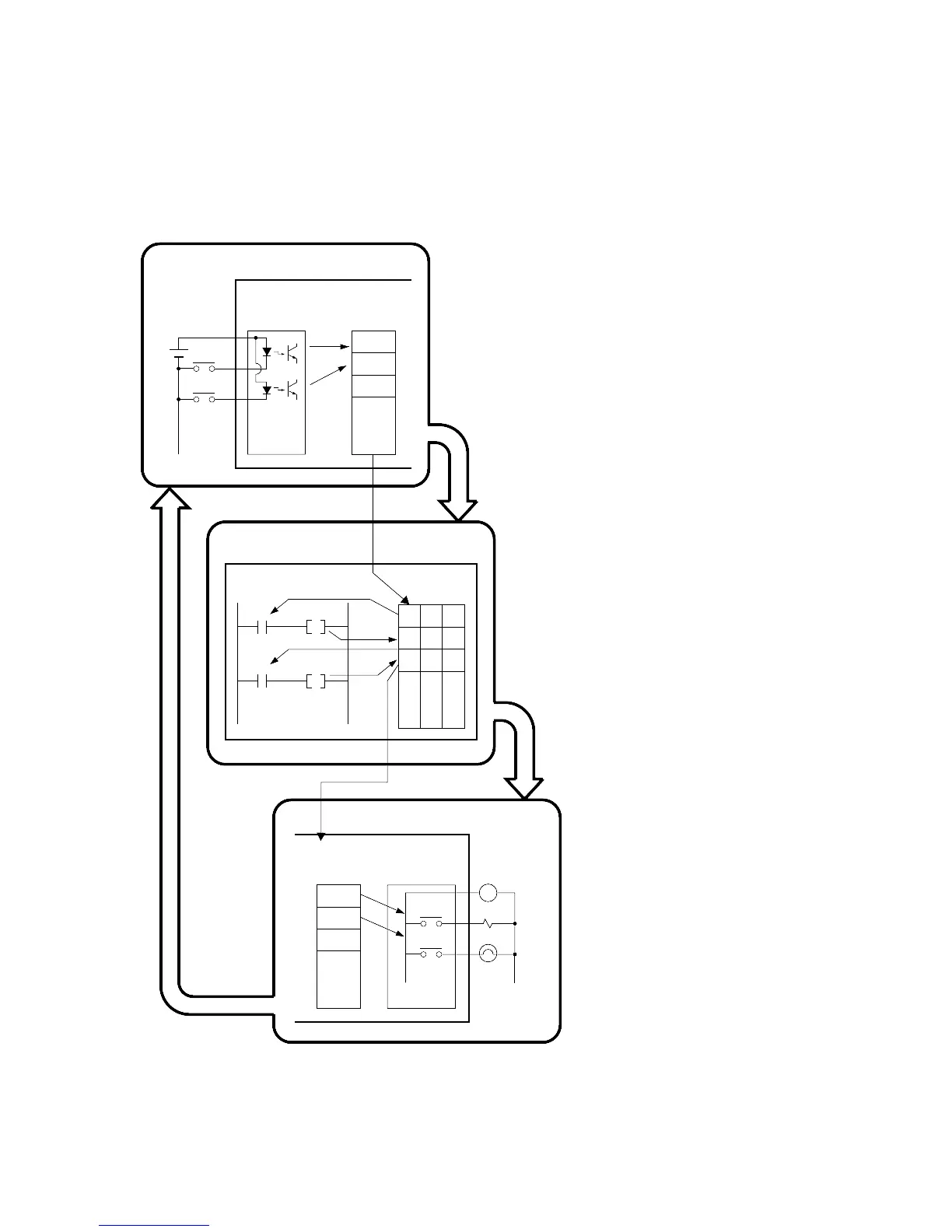60
4-1. Operating Principles of the Programmable Controller
2. Basic Operation
The basic operation of the programmable controller is:
- To read data from all the input field devices
- To execute the program according to the logic programmed
- To turn the output field devices ON or OFF
The process of reading inputs, executing the program, and updating the outputs is cyclicly repeated in the same
manner.
4-1. Operating Principles of the Programmable Controller
11 Input update stage
The programmable controller reads
information (ON or OFF) at the
input interface and stores it in the
memory for operands.
22 Program execution stage
The CPU of the programmable
controller executes the program
according to the logic programmed
by reading and writing the
information from and to the
memory for operands.
The memory for operands is
successively updated according to
the execution of the program.
33 Output update stage
After program execution, the
information (ON or OFF) in the
memory for operands is written to
the output interface and turns the
output field devices ON or OFF.
